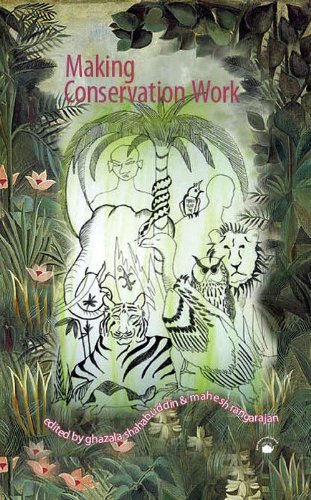making conservation work (2 Ergebnisse)
Suchfilter
Produktart
- Alle Product Types
- Bücher (2)
- Magazine & Zeitschriften (Keine weiteren Ergebnisse entsprechen dieser Verfeinerung)
- Comics (Keine weiteren Ergebnisse entsprechen dieser Verfeinerung)
- Noten (Keine weiteren Ergebnisse entsprechen dieser Verfeinerung)
- Kunst, Grafik & Poster (Keine weiteren Ergebnisse entsprechen dieser Verfeinerung)
- Fotografien (Keine weiteren Ergebnisse entsprechen dieser Verfeinerung)
- Karten (Keine weiteren Ergebnisse entsprechen dieser Verfeinerung)
- Manuskripte & Papierantiquitäten (Keine weiteren Ergebnisse entsprechen dieser Verfeinerung)
Zustand Mehr dazu
- Neu (2)
- Wie Neu, Sehr Gut oder Gut Bis Sehr Gut (Keine weiteren Ergebnisse entsprechen dieser Verfeinerung)
- Gut oder Befriedigend (Keine weiteren Ergebnisse entsprechen dieser Verfeinerung)
- Ausreichend oder Schlecht (Keine weiteren Ergebnisse entsprechen dieser Verfeinerung)
- Wie beschrieben (Keine weiteren Ergebnisse entsprechen dieser Verfeinerung)
Einband
Weitere Eigenschaften
- Erstausgabe (Keine weiteren Ergebnisse entsprechen dieser Verfeinerung)
- Signiert (Keine weiteren Ergebnisse entsprechen dieser Verfeinerung)
- Schutzumschlag (Keine weiteren Ergebnisse entsprechen dieser Verfeinerung)
- Angebotsfoto (1)
Sprache (1)
Gratisversand
- Kostenloser Versand nach USA (Keine weiteren Ergebnisse entsprechen dieser Verfeinerung)
Land des Verkäufers
Verkäuferbewertung
-
Making Conservation Work : Securing Biodiversity in this New Century
Anbieter: Vedams eBooks (P) Ltd, New Delhi, Indien
Hardcover. Zustand: New. Contents Acknowledgements. Notes on contributors. Introduction/Mahesh Rangarajan and Ghazala Shahabuddin. I. Critiques 1. Displacement as a conservation tool Lessons from the Kuno wildlife sanctuary Madhya Pradesh/Arpan Sharma and Asmita Kabra. 2. Of paper tigers and invisible people The cultural politics of nature in Sariska/Radhika Johari. II. Reappraisal 3. Deconstructing sea turtle conservation in India/Kartik Shanker. III. Emergent paradigms 4. The politics of participatory conservation The case of the Kailadevi wildlife Sanctuary Rajasthan/Priya Das. 5. The ecology of income Can we have both fruit and forest/Nitin D. Rai. IV. Innovation 6. Threatened forests forgotten people/Aparajita Datta. 7. Rainforest restoration and wildlife conservation on private lands/Divya Mudappa and T.R. Shankar Raman. 8. The hunter and the hunted Conservation with marginalized communities/Bahar Dutt Rachel Kaleta and Vikram Hoshing. Bibliography. Wildlife today is competing with some of India's most underprivileged people for survival. This apart commercial and industrial pressures from far outside part boundaries reverberate within these fragile ecological oases making them vulnerable in a way they never have been before. Reconciling the question of preserving what little wildlife remains with the needs of humans has never seemed as tangled. Fortress conservation based solely on strict nature protection is one response to these pressures a response under attack. Recent tiger crises and tribal land rights debates have highlighted the opposition of strict preservationists to advocates of people's rights. Meanwhile fresh work in sociology and biology and innovative interventions show new ways forward that do not neatly fit existing paradigms. The book moves from generalities to specifics from ideal models to working approaches that seek to secure India's biodiversity by fashioning practical responses based on new often unexpected partnerships. A lucid introduction outlines the conservation situation in India the essays that follow illustrate various facets of it. Each essay is deeply grounded in the field the authors explore whether and how far animal and human needs can be reconciled. Making Conservation work articulates a new urgent discourse on conservation. It is a volume that looks ahead with cautious hope. For all who want to understand the conservation debate today this is an indispensable book. 298 pp.
-
Making Conservation Work
Verlag: LAP LAMBERT Academic Publishing Apr 2011, 2011
ISBN 10: 384432559X ISBN 13: 9783844325591
Sprache: Englisch
Anbieter: buchversandmimpf2000, Emtmannsberg, BAYE, Deutschland
Taschenbuch. Zustand: Neu. Neuware -The subject of this book was conceived when India's ¿tiger crisis' was brewing in 2005. The country had just discovered that the tiger had become locally extinct from a premier Protected Area. The large public and media coverage led to formation of a Tiger Task Force, which pointed out that India's tiger conservation schemes had been lacking in collecting support from local communities. If a conservation scheme antagonizes local people, there is very little chance for success. With this background, we set out to test the utility of a new methodology. Conservation needed methods that could be employed on ground without having to wait for large scale policy change. And our method provides us that opportunity. Through this publication, we hope to bring the scientific community a little closer to answering pertinent questions about balancing stakeholder aspirations, natural justice, and prudence of environmental management. We hope that this work will contribute to societal discourse on incorporating local expectations in management of sensitive ecosystems, and would be useful to Protected Area managers, academicians and NGOs and all those working on natural resources management.Books on Demand GmbH, Überseering 33, 22297 Hamburg 136 pp. Englisch.



